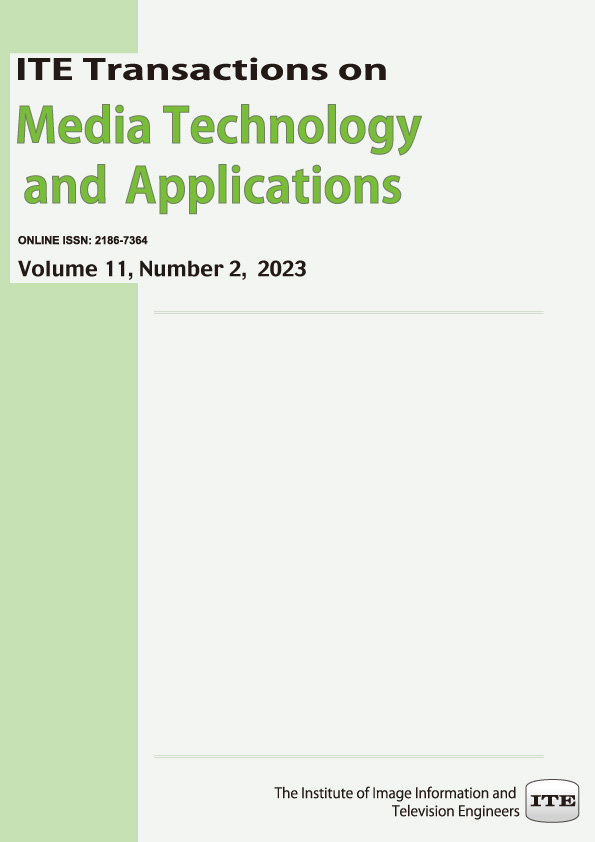11 巻, 2 号
選択された号の論文の11件中1~11を表示しています
- |<
- <
- 1
- >
- >|
Special Section on 3D Media Technologies
-
2023 年11 巻2 号 p. 26
発行日: 2023年
公開日: 2023/04/01
PDF形式でダウンロード (24K) -
2023 年11 巻2 号 p. 27-33
発行日: 2023年
公開日: 2023/04/01
PDF形式でダウンロード (2051K) -
2023 年11 巻2 号 p. 34-42
発行日: 2023年
公開日: 2023/04/01
PDF形式でダウンロード (9233K) -
2023 年11 巻2 号 p. 43-48
発行日: 2023年
公開日: 2023/04/01
PDF形式でダウンロード (957K) -
2023 年11 巻2 号 p. 49-55
発行日: 2023年
公開日: 2023/04/01
PDF形式でダウンロード (1855K) -
2023 年11 巻2 号 p. 56-60
発行日: 2023年
公開日: 2023/04/01
PDF形式でダウンロード (1799K) -
2023 年11 巻2 号 p. 61-66
発行日: 2023年
公開日: 2023/04/01
PDF形式でダウンロード (3051K) -
2023 年11 巻2 号 p. 67-74
発行日: 2023年
公開日: 2023/04/01
PDF形式でダウンロード (4193K) -
2023 年11 巻2 号 p. 75-87
発行日: 2023年
公開日: 2023/04/01
PDF形式でダウンロード (6357K) -
2023 年11 巻2 号 p. 88-92
発行日: 2023年
公開日: 2023/04/01
PDF形式でダウンロード (1092K)
Regular Section
-
2023 年11 巻2 号 p. 93-100
発行日: 2023年
公開日: 2023/04/01
PDF形式でダウンロード (4714K)
- |<
- <
- 1
- >
- >|
